Jan 24, 2024
Reconnect with Chiba's beautiful Boso Peninsula on Isumi, Kominato trains
Gallery - Train travel across the Boso Peninsula, Chiba
Following the completion of repairs to the final section of the Isumi Railway line damaged by a typhoon in September it's once again possible to traverse the beautiful Boso Peninsula in Chiba Prefecture using the services of the Isumi and Kominato railways. And in time for spring, possibly the best time to visit the region.
(Editor's note: All of the images in this article were taken prior to September 2023 when Typhoon Yun-yeung made landfall in the region.)
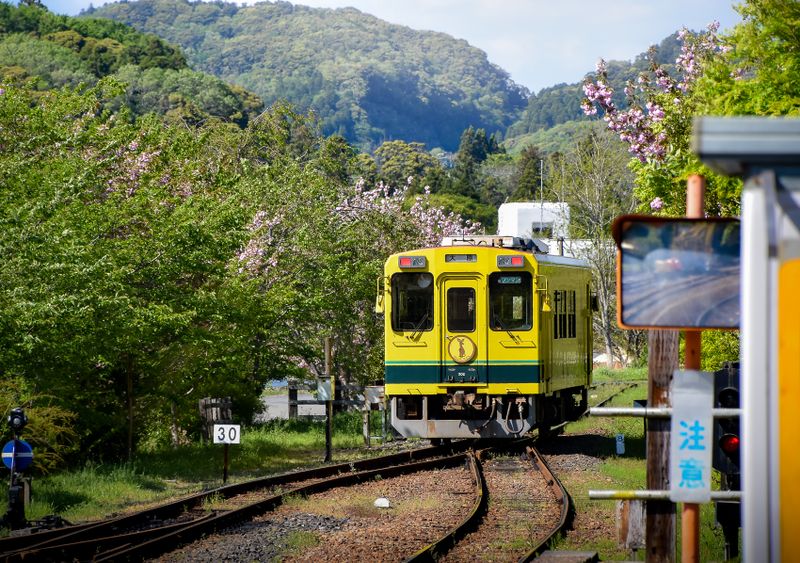
(Isumi Railway line train arrives at a station on the Boso Peninsula, Chiba Prefecture. Photo taken 2018.)
It wasn’t until Christmas Day last year that services of the Isumi Railway in Chiba Prefecture, near Tokyo, resumed full operations following the completion of repair work on sections of line that had been closed since September due to damage caused by heavy typhoon rains.
Resumption of services between Otaki and Kazusa-Nakano stations on the Isumi Railway, or “Isumi Tetsudo,” a service popular with tourists, meant that travelers could once again cross Chiba’s rural Boso Peninsula by train for the first time in over three months.
Isumi Railway passengers can now travel from Ohara Station near the Pacific Coast in Isumi City all the way to Kazusa-Nakano Station in Otaki City, in the heart of the Boso Peninsula. From Kazusa-Nakano connections can be made to Kominato Railway trains bound for Goi Station near the waters of Tokyo Bay in Ichihara City.
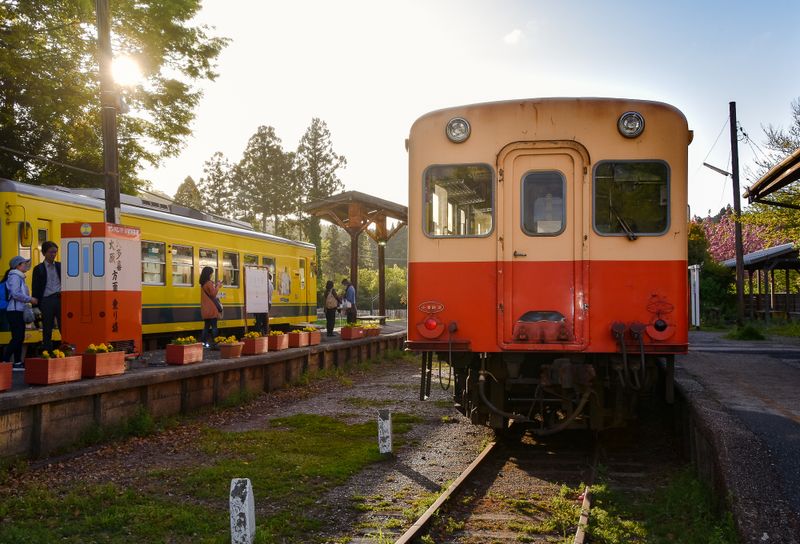
(Travelers connect between Isumi and Kominato trains at Kazusa-Nakano Station in the city of Otaki, Chiba Prefecture. Photo taken 2018.)
Both the Isumi and Kominato railway services pass through beautiful, rural regions which were among those that suffered significant damage from flooding and landslides when Typhoon Yun-yeung brought record rainfall to Chiba Prefecture, and other parts of eastern Japan, in early September.
To mark the resumption of services and encourage train travelers to return to the region, Isumi Railway Company and Kominato Tetsudo Co., Ltd., along with East Japan Railway Company Chiba Branch, began a digital stamp rally on December 27 - the “Oku Boso stamp rally.”
Through Ekitag, a digital station stamp application, rally participants can use a smartphone to scan touch spots installed at participating stations and collect stamps. The digital stamps can be enjoyed in new ways, such as superimposing them onto photos from the region and sharing them on social media, according to rally organizers. The stamp rally runs until March 17.
“It was a disaster that none of our employees had ever experienced before, but we were encouraged by local people telling us to hang in there,” Koichi Furutake, president of Isumi Railway, told NHK during a ceremony to mark the resumption of services on December 25.
“From now on, I would like to come up with ideas and projects that will further revitalize the local area and increase the value of Isumi Railway,” he said.
Isumi Railway began operating in the late 1980s. As of the end of FY2021 the railway had transported over 20 million passengers. Like many local railway lines across Japan, Isumi Railway faces challenges presented by depopulation and the threat of damage to infrastructure caused by natural disasters, like the typhoon in September.
In a message on the company’s website however, Furutake says that the area in which Isumi Railway operates is “experiencing a tailwind of reforms in the way people work, and an increasing number of people are moving to the area to lead more fulfilling lifestyles.”
There are 14 stations on the Isumi Railway line which takes passengers on a relaxed journey through a rural landscape of pretty backyards, rice fields and forests. Timetables are such that it is possible to get off at any one of the stations, take a look around the area, and return in time to catch the next onward train.
The Isumi Railway service was perhaps most famous outside of the region for its moniker of the “Moomin Train,” for its carriages decorated with characters and art from the world created by Finnish writer and illustrator Tove Jansson. The Isumi Railway "Moomin" theme was dropped in 2019.
Starting at Ohara Station, train travelers could begin or end their journey across the Boso Peninsula with a visit to Ohara Beach which is within walking distance of the station. Where the beach meets the mouth of the Shiota River is a popular surfing spot. A parking lot and unit of toilets and showers overlooks the waves.
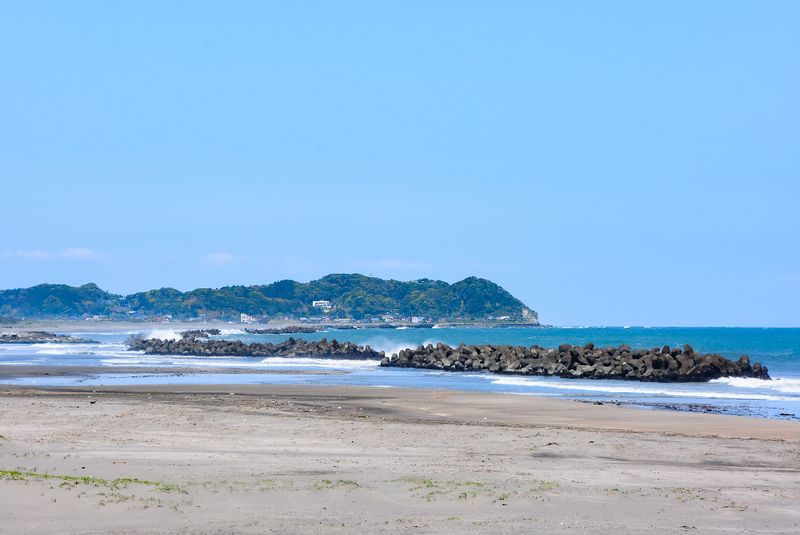
(Ohara Beach, Chiba Prefecture. Photo taken 2018.)
South of the river is a small fishing port which is home to a morning seafood market.
Traveling west from Ohara trains pull into Kuniyoshi Station. South of the station near the banks of the Isumi River, is a branch of the Izumo Taisha Grand Shrine located in Shimane Prefecture, western Japan. The shrine in Isumi is one of only two branches of Izumo Taisha in the Kanto region, the other being in the city of Sagamihara.

(Street near Kuniyoshi Station, one of the 14 stops on the Isumi Railway line on Chiba's Boso Peninsula. Photo taken 2018.)
Of the 14 stations on the Isumi Railway line, Otaki Station and the surrounding area command the most time for sightseeing.
Outside of Otaki Station a lovely castle town, or “jokamachi,” unfolds and is easy to navigate on foot. Across the road from the station a sightseeing and information center has maps, toilets and food.
The streets here are lined with mud-walled “dozozukuri” storehouses and merchant homes, some of which are now registered cultural properties and museums.
Otaki’s castle town rewards a relaxed stroll. The lane that runs north to south between the main thoroughfares of Jokamachi Dori and Nankaku Dori is particularly delightful. Anywhere in town though, be sure to take a breather in one of the tiny “parks” surrounded by greenery, flowers, and old-world charm.
Otaki Castle is a beautiful study in brilliant white sitting with all the pomp and splendor a fortress should, atop a hill west of town. It’s a 20-min walk to the castle from Otaki Station on a well-paved road that follows sections of the Isumi River. The road turns into something of a stiff climb as it gets closer to the castle grounds.
The original castle was constructed in the late 16th Century. The current guise is a 1975 reconstruction and is home to a museum.
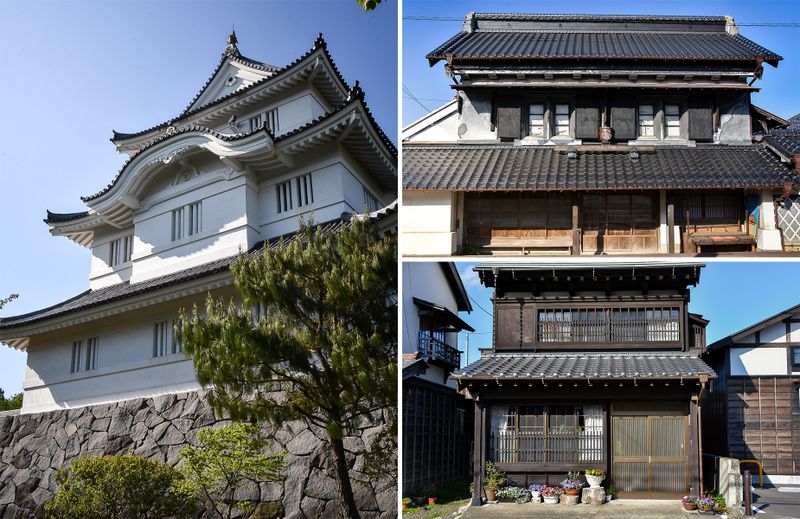
(Otaki Castle and townscape, Otaki City, Chiba Prefecture. Photos taken 2018.)
From Otaki, Isumi Line trains head south before bending back northwest towards the end of the line, Kazusa-Nakano. After Otaki, there is a sense of journey's end.

(Rural scenes along the Isumi Railway line on the Boso Peninsula in Chiba Prefecture. Photo taken 2018.)
Along these sections of track space is at its tightest as carriages sneak in and out of patches of forest and train doors open to stations absent of both staff and, often, passengers. (Note: Our last visit using the railway was prior to reconstruction work.)
Coming from Ohara, Kazusa-Nakano Station marks the western terminus of Isumi Railway trains and the first departure for Kominato Railway (Kominato Tetsudo) trains bound for Goi Station near Tokyo Bay in Ichihara City.
The first stop after departing Kazusa-Nakano on a Kominato train is Yorokeikoku Station, a point of access to the Yorokeikoku Valley which offers a number of hiking trains. The valley is particularly popular in autumn when people come to see the beautiful fall leaves.
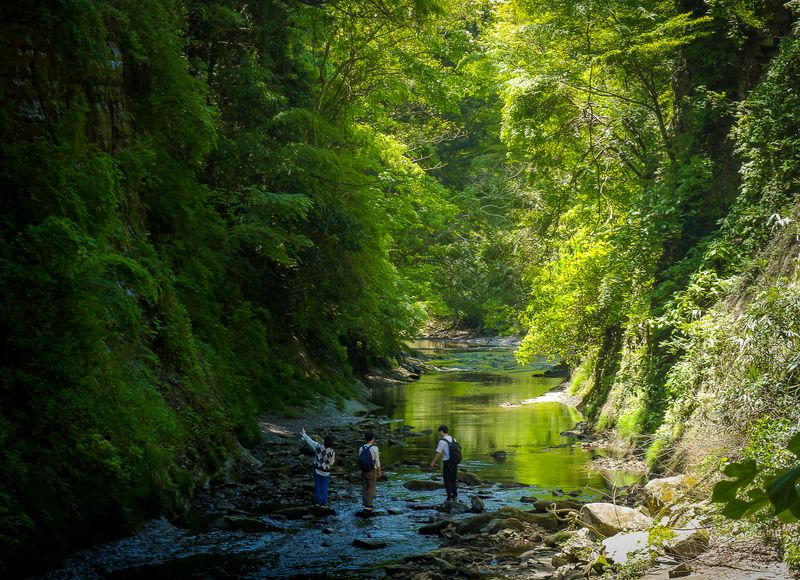
(Exploring a section of the Yoro Keikoku Valley, Chiba Prefecture. Photo taken May 2023.)
Ohara, Kuniyoshi, and Otakai stations on the Isumi Railway and Goi, Kazusa-Ushiku, Kazusa-Tsurumai, and Yorokeikoku stations on the Kominato Railways are among the stations where digital stamps can be collected as part of the “Oku Boso stamp rally.”
Have you ever traveled on the Boso Peninsula? What are the best spots in the area? Share your experiences with others in the comments.



0 Comments